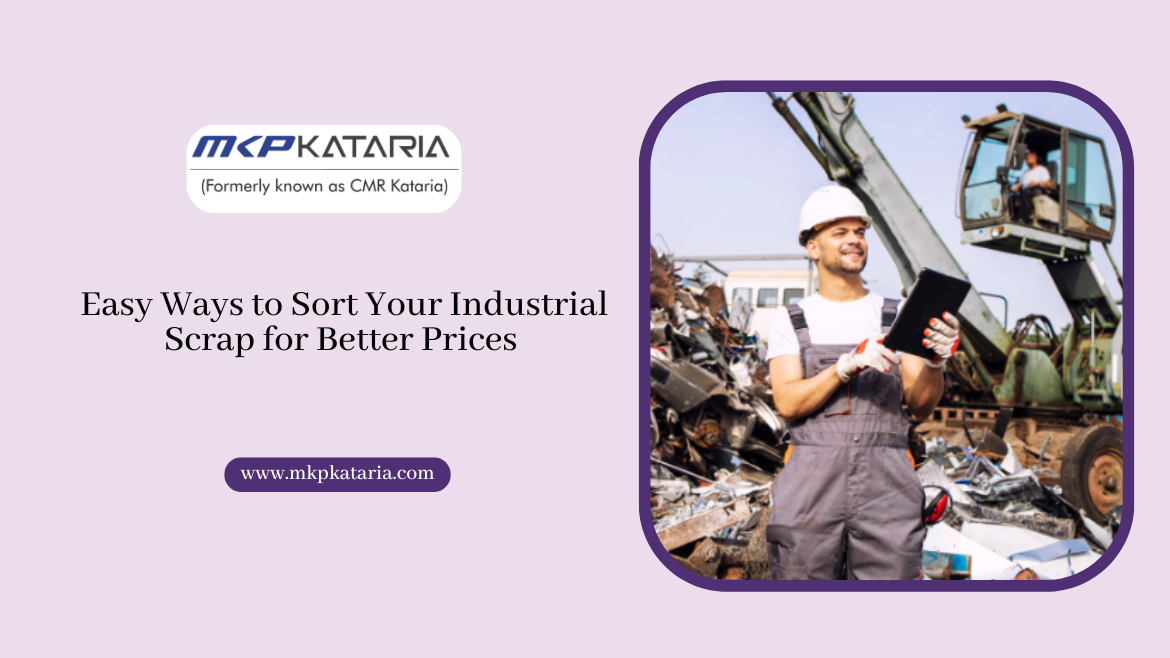When you deal with large amounts of metal waste, proper sorting can make a huge difference in what you earn from it. Many industries overlook this simple step, losing money without even realizing it. Sorting your scrap correctly can help you get higher returns, save space, and even contribute to a cleaner environment. Whether you have metal offcuts, wires, or leftover machine parts, learning how to organize them smartly can pay off. If you are looking to sell industrial scrap for sale, knowing how to sort it properly is the first step toward getting the best prices and we will discuss the sorting part in this article.
Identify the Type of Metals
The first and most important step is identifying the types of metals you have. Industrial scrap usually includes ferrous and non-ferrous metals.
- Ferrous metals include iron and steel. They are magnetic and usually rust over time.
- Non-ferrous metals include copper, aluminum, brass, lead, and stainless steel. These metals do not rust easily and are generally more valuable.
A simple way to tell the difference is by using a magnet. If the magnet sticks, it’s ferrous and If it doesn’t, it’s non-ferrous. Separating these two categories right from the start can help you get a clearer picture of your scrap’s value.
Separate Metals by Type and Grade
Once you have divided your scrap into ferrous and non-ferrous groups, the next step is to sort each group further by type and grade. For example, copper can be divided into bright copper wire, No. 1 copper, and No. 2 copper. Aluminum can be separated into sheets, cast aluminum, or insulated aluminum wire.
Buyers pay different prices for each grade because of the purity and ease of recycling. The cleaner and more uniform your scrap, the higher the value. If you take the time to separate copper wires from aluminum pieces, you can expect a noticeable increase in the rate per kilogram.
Remove Non-Metal Attachments
Industrial waste often includes materials that are not purely metal. Items like plastic coatings, rubber seals, paint, insulation, or glass can reduce the scrap’s value. Before selling, try to remove these non-metal parts as much as possible. For instance, if you have insulated wires, stripping off the outer coating will help you get a better rate for the pure copper inside. Similarly, removing bolts, labels, or any attached materials from metal frames can improve the price. It might take some extra effort, but the higher returns will make it worthwhile.
Keep Your Scrap Clean and Dry
Moisture and dirt can lower the quality of scrap metal. Wet or rusty metal may be rejected or valued less by buyers. Store your scrap in a dry area and avoid mixing it with oil, grease, or chemical residues. Clean scrap not only looks better but also saves recyclers time and effort during processing. You can also use labeled bins or containers to store different types of scrap separately. This small step helps maintain cleanliness and organization, especially if your business produces scrap regularly.
Weigh and Record Your Scrap
Before selling, it’s a good idea to weigh and record your scrap metal. Keep track of the types, quantities, and weights in a simple logbook or spreadsheet. This habit helps you understand your monthly or yearly scrap output and negotiate better deals with buyers. When you know exactly what you have, it’s harder for buyers to undervalue your materials. It also helps in planning pickups or deliveries efficiently, saving both time and transportation costs.
Find Reliable Scrap Buyers
Not all scrap buyers offer the same rates. Take some time to research and find trusted recyclers or dealers with good reputations. Ask for quotations from multiple buyers before making a decision. Some dealers even offer pick-up services, especially for large quantities of industrial scrap. Working with honest and transparent buyers ensures that you receive fair market prices and prompt payments.
Reuse and Repurpose Where Possible
Before selling, check if any part of your scrap can be reused or repurposed within your own facility. Sometimes, leftover materials can be reshaped or repaired for internal use. This not only saves money but also reduces waste. For example, aluminum offcuts can sometimes be melted and molded into new components. Reusing what you can and selling the rest ensures that nothing goes to waste.
Conclusion
Sorting your industrial scrap doesn’t require fancy tools or expensive equipment, just some time, organization, and consistency. By following these simple steps, identifying metals, separating grades, removing impurities, and keeping your scrap clean, you can earn better prices and make your recycling process more efficient. A well-organized scrap management system not only boosts your profits but also supports environmental sustainability.





